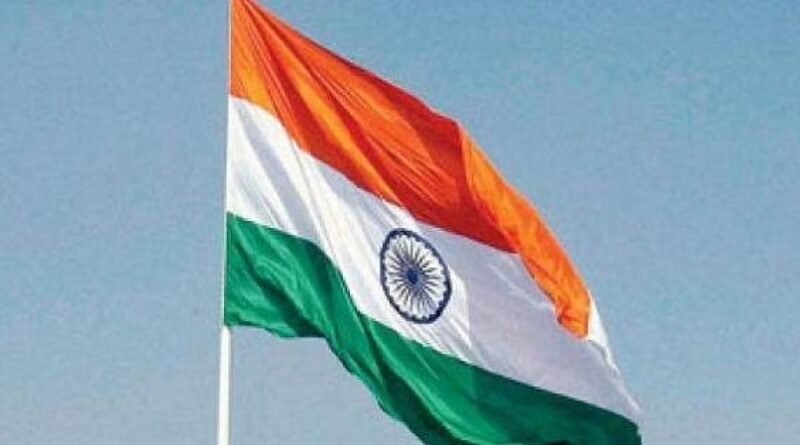Where are we 75 years after Independence?
In recent years, governmental power at the Centre & in many states has gone into the hands of those who follow the precepts of the Right, which had remained outside the spectrum of national movement.
It is 75 years since India attained independence from the mighty British empire on which the sun was to never set. One of the most important events of the twentieth century, it set the stage for the dissolution of formal empires in most parts of the world. A good moment, then, to reflect on the extent to which the Indian nation-state has lived up to the vision of the nearly century-long Indian national movement, perhaps the greatest mass movement in world history, which gave birth to it and instilled its spirit into the new Constitution.
The core ideas behind the vision of the Indian national movement, which in a coalesced form has been called the Idea of India, were: Independent India would be a) sovereign, b) democratic, c) secular, d) have a pro-poor orientation and e) would be based on reason and tarka (argument) rather than blind faith and obscurantism.
There was a consensus on these among the entire spectrum of nationalists, whatever their other differences may have been, from Moderates like Dadabhai Naoroji, MG Ranade, GK Gokhale to Lokmanya Tilak, CR Das, Bhagat Singh, Mahatma Gandhi, Jawaharlal Nehru, Maulana Azad, Subhash Bose as well as Socialists and Communists like Jaiprakash Narayan, Acharya Narendra Dev, PC Joshi and Muzaffar Ahmed. Only those outside this nationalist spectrum—whether stakeholders in the Empire or other loyalists wedded to partisan ideas—did not share this Idea of India. Set your search filter to those who had difficulty accepting the Indian Constitution and the national flag.
 In recent years, governmental power at the Centre and in many states has gone into the hands of those who follow the precepts of the Right, which had remained outside the spectrum of the national movement. Consequently, the core components of the Idea of India are being challenged—often in ways that actively seek to cloud the conceptual turf. It may be in order, therefore, to clarify what those components were, and how they came to be distilled through India’s struggle against Empire.
In recent years, governmental power at the Centre and in many states has gone into the hands of those who follow the precepts of the Right, which had remained outside the spectrum of the national movement. Consequently, the core components of the Idea of India are being challenged—often in ways that actively seek to cloud the conceptual turf. It may be in order, therefore, to clarify what those components were, and how they came to be distilled through India’s struggle against Empire.
First, democracy as an idea evolves as an antonym to colonial bondage. Thus, it necessarily means civil liberties and freedom of the press. From Raja Ram Mohan Roy in 1824 to Surendranath Bannerjee in the 1880s, Tilak in the 1890s to Gandhiji in the 1920s, all asserted this unequivocally. The last three were jailed for doing so, with Tilak and Gandhi being charged with sedition under section 124A of the IPC, the infamous colonial law introduced in 1870 to curb precisely those freedoms.
Gandhiji, shortly before he was arrested and jailed in 1922 under the above section, asserted the seminal importance of civil liberties and a free press. He said: “We must make good the right of free speech and free association before we make any further progress towards our goal. To accept defeat in the matter of free speech and free association is to court disaster. We must defend these elementary rights with our lives.” He defined those in terms that may seem radical today!
“Liberty of speech means it is unassailed even when the speech hurts; liberty of the press can be said to be truly respected only when the press can comment on the severest terms upon, and even misrepresent, matters; and freedom of association is truly respected when assemblies of people can discuss even revolutionary projects.” Using simple put powerful imagery, he later reiterated how non-negotiable these freedoms were: “Civil liberty, consistent with the observance of non-violence, is the breath of political and social life. It is the foundation of freedom. There is no room there for dilution or compromise. It is the water of life. I have never heard of water being diluted.”
As a corollary, democracy also meant dialogue, dissent, respect for the opposition. Nehru was to repeatedly underline this and led by example by practising it. In 1950, at the peak of his popularity, when he could have smothered any opposition easily, he declared: “I am not afraid of the opposition in this country and I do not mind if opposition groups grow. I do not want India to be a country in which millions of people say yes to one man, I want a strong opposition.” Rather presciently, he also said: “This is too large a country with too many legitimate diversities to permit any so-called strong man to trample over people and their ideas.”
Now, the second critical element of the idea of India: secularism. The nationalists saw democracy and secularism as intertwined phenomena; you could not have one without the other. Hence the term secular-democracy was often used together; they were seen as conjoined, just as communalism was with loyalism. For them, diversity, whether linguistic, ethnic or religious, was not to be seen as a problem but was something to be celebrated. Again, as proof that you cannot assassinate ideas, let’s hark back to Gandhi’s words from 1942, separated into a series of aphorisms for emphasis:
“…Hindustan belongs to all those who are born and bred here and who have no other country to look to. Therefore it belongs to Parsis, Beni Israels, to Indian Christians, Muslims and other non-Hindus as much to Hindus.”
“Free India will be no Hindu raj, it will be Indian raj, based not on the majority of any religious sect or community but on the representatives of the whole people without distinction of religion….”
“Religion is a personal matter which should have no place in politics. It is in the unnatural condition of foreign domination that we have unnatural divisions according to religion….”
“There is no force in the cry of driving out the English if the substitute is to be Hindu or any other domination. That will be no swaraj.”
There is a reason why the world is no longer accepting India as a full democracy and is, instead, being variously describing as a “partially free democracy”, a “flawed democracy” and even as an “electoral autocracy”. Whether or not you agree with the appellations, it is not disputed by any side that India is witnessing a sort of democratic backsliding. Indeed, those who champion the new ethos openly articulate their consensus on this—in an affirmative way, as if it was a desirable outcome.
And those who have seen only this India do not quite realise that the idea of a Hindu rashtra was unthinkable even a few decades ago—it was rejected by the thought leaders of our freedom movement precisely because it would be a mirror image of Muslim Pakistan. We need no other example to see why a theocratic state defined by anti-minorityism on the streets and on the statute books is the very opposite of a vehicle of freedom.
Professor, who taught contemporary history at JNU for over four decades.
By Aditya Mukherjee
Source: The New Indian Express




